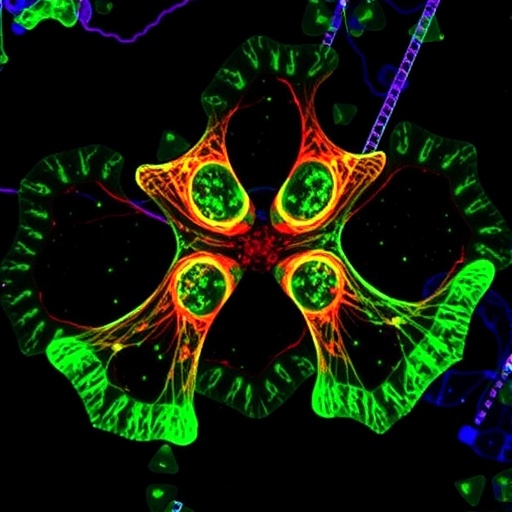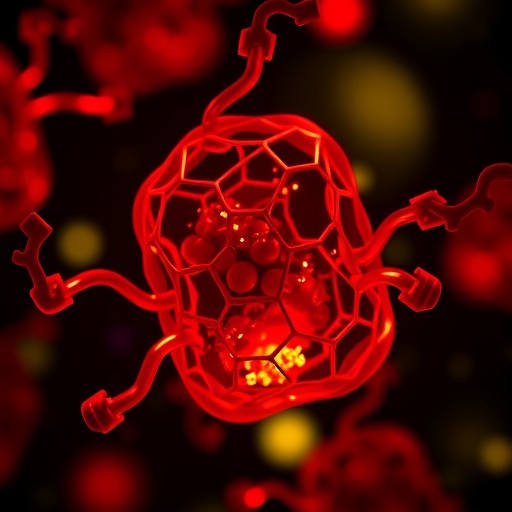
New research from the University of Copenhagen points to an entirely new approach for designing insulin-based pharmaceuticals. The approach could open the door for more personalized medications with fewer side effects for Type 1 Diabetes patients.
Knud J. Jensen is a professor at the University of Copenhagen's Department of Chemistry. Together with Technical University of Denmark (DTU) and Novo Nordisk researchers, he has published "Construction of Insulin 18-mer Nanoassemblies Driven by Coordination to Iron (II) and Zink (II) Ions at Distinct Sites" in the renowned journal, Angewandte Chemie.
"We have discovered an entirely new method of modifying a molecule – Insulin – that is important for 35 million diabetes patients. We are incredibly happy with that," says Professor Jensen.
Diabetes occurs when people lose their ability to produce insulin, a protein that regulates blood sugar. Diabetes cannot be cured, and is fatal if untreated. Furthermore, if improperly treated, the illness can lead to serious complications and permanent health consequences. Luckily, injections of manufactured insulin can help patients live nearly normal lives. But there is one catch: producing insulin that can be evenly released throughout the day is problematic. As a result, patients have a tough time maintaining uniform blood sugar levels.
Natural insulin assembles into homogenous grid-like structures called hexameres. The great challenge producing insulin medications is to create equally homogenous nanostructures. The more uniformly insulin can be assembled; the more likely it is that it can be released in predictable amounts, and at steady rates.
Researchers at the Department of Chemistry have devised a method that gets manufactured insulin to self-assemble in homogenous chemical grid constructs. Bipyridines sit at the end of all insulin molecules. A bipyridine serves as the hook that insulin uses to hitch onto other molecules. By hooking an Iron II atom to the bipyridine, chemists can control insulin assembly with great precision.
Whereas insulin produced in a body is stored in the pancreas until ready for deployment, diabetes patients inject manufactured insulin under the skin, where it is stored in fatty tissue. Thanks to the newly developed Iron II method, Jensen and his team have persuaded manufactured insulin to self-assemble in nanostructures that are well suited form depots in fat. To study whether their self-assembling nano-insulin could also be released into the bloodstream, Jensen's research team tested the new form of insulin on rats. And their blood sugar levels fell. This result leaves Professor Jensen optimistic about the new method.
"We have demonstrated that we can influence the manner in which insulin assembles, and we have demonstrated that the insulin can then be released. A great deal of work remains before the principles of our nano-insulin can be translated into a medication. But for me, it is absolutely clear that this could be a good method for designing medications that release over extended periods of time, from depots beneath the skin," says Knud J. Jensen, who continues: "because we are able to control the insulin's self-assembling properties so precisely, I believe that the method can also be used to design insulin with a variety of properties."
Besides studying the effect in rats, the research team also investigated the insulin grid structures using the nanotech methods, Atomic Force Microscopy (AFM) and Small Angle X-ray Scattering. AFM photographs the surfaces of molecules, and Small Angle X-Ray photographs the internal structures. In this way, they have been able to state with certainty that the addition of Iron II really has allowed the insulin to assemble itself into an unusually homogenous manner.
For Professor Jensen though, the chemistry behind the self-assembly is the real kick. "Using Iron II to make proteins self-assemble is a new type of chemical process. That is to say, that we have conducted fundamental research. But we have chosen to conduct our fundamental research on a molecule that is relevant for an important industrial partner. That our fundamental research can lead to the development of new medications makes our work feel all the more relevant," concludes Jensen.
###
Media Contact
Jes Andersen
[email protected]
45-23-60-11-40
http://www.science.ku.dk/english/




